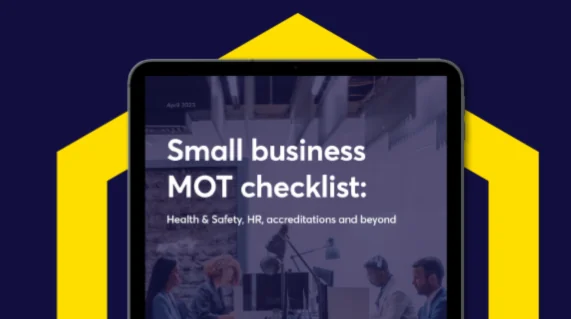In the world of Health & Safety, the ALARP principle is a key concept that should guide your decision-making when it comes to ensuring a safe working environment. But what does ALARP stand for? It stands for “As Low As Reasonably Practicable” and it’s really important when it comes to minimising risks in various industries. So today we’ll be exploring the ALARP principle, what it entails and why it’s crucial that both employers and employees are aware of it.
What is the ALARP principle?
The ALARP principle is a risk assessment approach designed to find the right balance between the costs and efforts involved in reducing risks and the benefits of that risk reduction. After all, you aren’t expected to spend a huge amount of money and resources eliminating every single risk, but you do need to show the Health and Safety Executive (HSE) that you’re doing what you can. Keeping your team safe should be your top priority, as putting your team in danger means putting your business in danger. Poor Health & Safety could mean a loss of staff, sickness, loss of productivity and fines – which could cost you far more than reducing the risks would have done in the first place.
Where is it used?
The ALARP principle is commonly employed in industries where risk management is paramount, such as construction, manufacturing, and healthcare. It plays a crucial role in decision-making processes related to health and safety.
The ALARP principle is most commonly used in industries where risk management is super important – like construction or manufacturing, and it plays a crucial role in the decision-making process when putting together a risk assessment.
Origins of ALARP
ALARP is a key part of the duties an employer has under the Health and Safety at Work Act 1974 and it’s what the HSE and other local authorities use to measure risk management. ALARP is fundamental to the work of a whole organisation, so it’s important that everyone knows about it.
What does ALARP mean?
The ALARP principle is explained by The Court of Appeal 1949, defining it as ‘reasonably practicable’ as weighing the risk against the sacrifice needed to further reduce it. The decision should be weighted in favour of Health & Safety, the process isn’t just as simple as balancing cost and benefits. It’s more about adopting measures except where they’re ruled out because of grossly disproportionate sacrifices. This is the example the HSE gives…
- Grossly disproportionate would be spending £1 million to prevent five staff getting bruised knees from a trip
- But spending £1 million to prevent a major explosion that could kill 150 people would be proportionate.
Employer’s responsibilities under ALARP
Understanding the ALARP principle is essential to make sure you comply with regulations, but it also defines the responsibilities of employers. Employers are obligated under the Health and Safety at Work Act 1974 to take reasonable steps to minimise risks within their control. This includes carrying out thorough risk assessments, implementing necessary controls, and regularly reviewing and updating safety measures. If there are further controls that can be implemented to reduce the risk, and it’s reasonably practicable, then it’s your responsibility to do so.
ALARP example
To provide a clearer picture of how the ALARP principle is applied, let’s explore where it originated:
Edwards vs National Coal Board 1949
Given that this was the case that started ALARP, we thought we’d cover it briefly here. In this case, it was determined that it would be reasonably practicable to shore up roadways that required it to prevent collapse – a man named Edwards died because this hadn’t been done, and the mine roadway collapsed. The National Coal Board thought it would be too expensive, so didn’t do it.
ALARP in practice
When we look at ALARP, we’re talking about the middle ground between unacceptable risk and acceptable risk. This is how ALARP could be applied when assessing risks:
- Assess the danger/damage
- Find how to reduce the risk
- Weigh up the risk to sacrifice
- If risk reduction methods can be made then a cost-benefit analysis can be carried out
- Implement the risk reduction methods and reassess.
Risk assessment help from HS Direct
Writing a risk assessment may seem like a daunting task, but you don’t have to do it alone. HS Direct offers comprehensive support to simplify the process. Our services include risk assessment templates, guidance, and expert advice to help you create a robust risk assessment.
Take a look at our wide range of risk assessments templates for every industry, our blank risk assessment template if you want to tailor your risk assessments to your business, or if you need a starting point, just download our free template.
Or, if you want to speak to a member of the team about risk assessments or your business needs, just call 0114 244 4461 or visit our contact page and we’ll get back to you!









